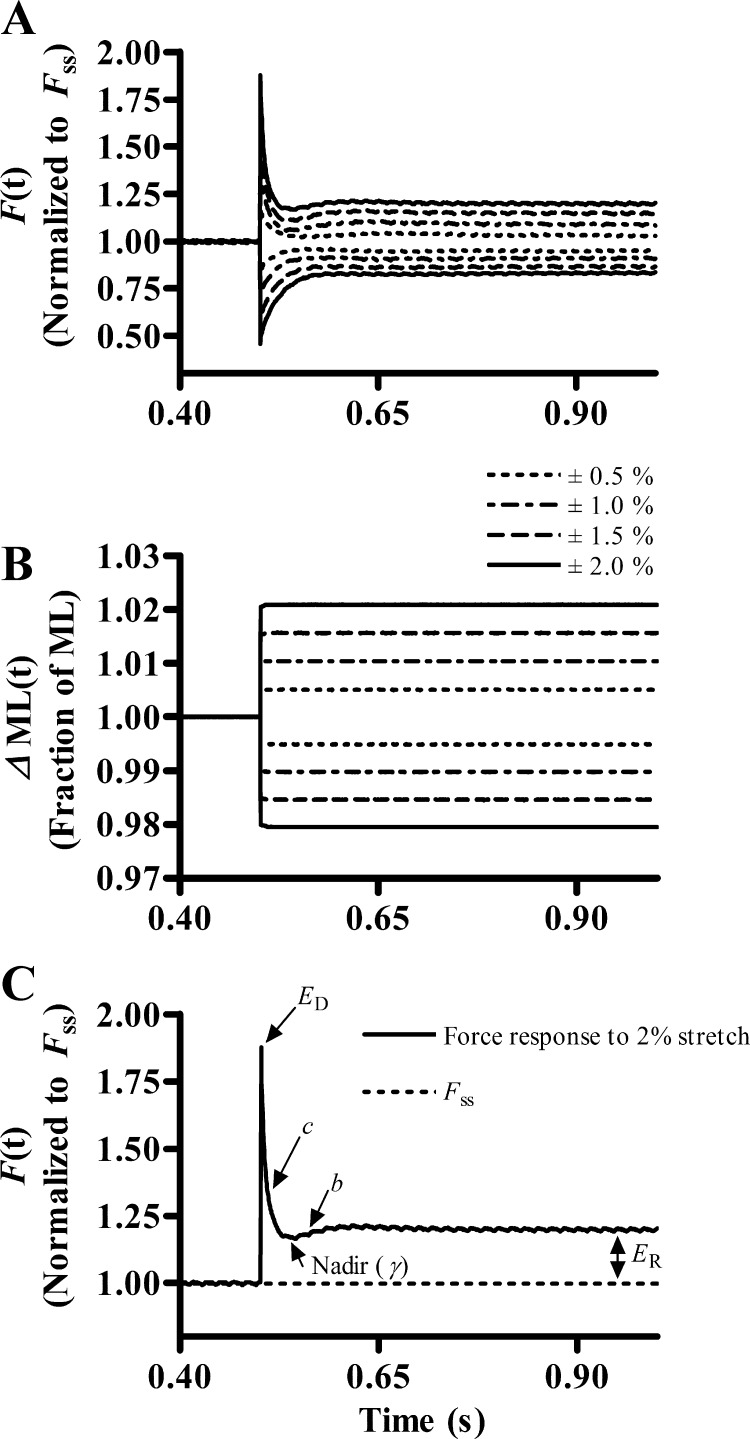Fig. 1.
Representative family of force responses of a muscle fiber to step-like length perturbations. A: force responses of a maximally activated (pCa 4.3) transgenic-wild-type (Tg-WT) cardiac muscle fiber at sarcomere length (SL) 2.2 μm normalized to isometric steady-state force (Fss). B: length perturbation refers to the step-like stretch and release of the muscle fiber by ±0.5, ±1.0, ±1.5, and ±2.0% of the initial muscle length (ML). C: to highlight the significance of the 5 nonlinear recruitment distortion (NLRD) model parameters, only a representative sample of the force response of a maximally stretched (2%) Tg-WT fiber at SL 2.2 μm is shown. The NLRD model (13) parameters are as follows: the rate by which additional cross-bridge (XB) are recruited because of a change in ML (b); the rate by which the strain of distorted XB is dissipated, following a sudden change in ML (c); the magnitude of instantaneous fiber stiffness due to a sudden change in ML (ED); the magnitude of change in stiffness from the initial steady state to the new steady state due to the length-mediated recruitment of XB (ER); and the nonlinear term (γ) that represents the allosteric cooperative mechanisms by which distorted XB affect recruitment of additional XB. Arrows point to the regions on the force response trace from which the respective NLRD parameters were estimated.

